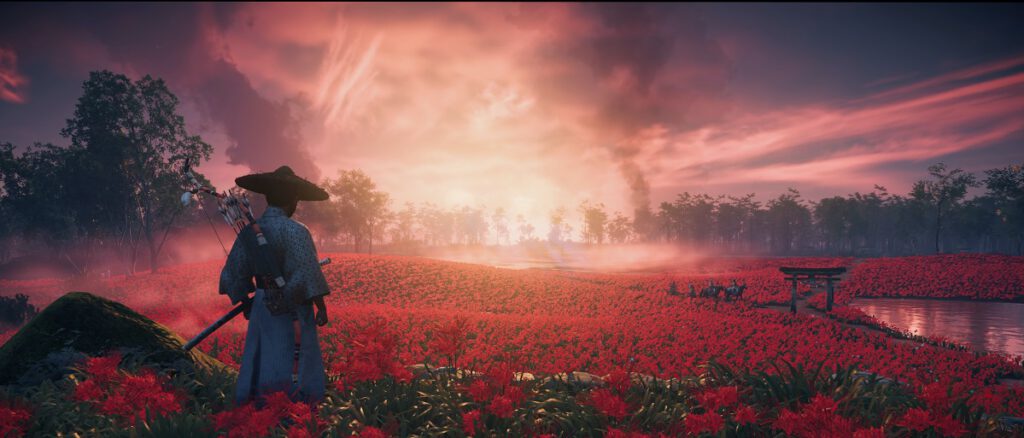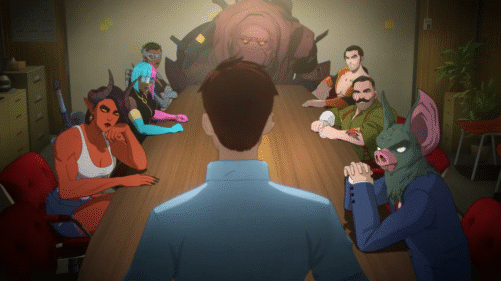There’s a new title holder for the best-looking game on the PS5, “Ghost of Tsushima: Director’s Cut,” an extended and amplified version of one of the best titles of 2020. Last Summer, Sony released this action/adventure, inspired so heavily by Akira Kurosawa that it has a mode named after him. Just over a year later, they have released what they’re calling a director’s cut of the game, packed with upgrades for the PS5 along with an entirely new island to explore, complete with a new story arc and new mechanics to take advantage of the capabilities of the next-gen console. The result is a strikingly gorgeous game, one that’s easier than ever to get lost in, which is something it feels like everybody wants to do this summer.
“Ghost of Tsushima” is the story of Jin Sakai (expertly voiced by Daisuke Tsuji), a samurai warrior who is presumed dead after a Mongol attack led by Khotun Khan (Patrick Gallagher). Over the course of the game, Jin becomes the “Ghost,” a legendary samurai who frees his people and gets his vengeance, while charting the trajectory of a man coming to terms with his own past. It’s one of the best cinematic video games of the PS4 era.
The expansion of the original story for this director’s cut occurs after Act 1, about 8-10 hours in, when the game opens up to an entire new map and reveals the location of a place called Iki Island. (If you played through the game on the PS4, you can transfer your save file and go directly there. If you lost your save file, you’re going to have to devote a few hours to get to the new stuff, which isn’t making everyone happy.) More than mere window dressing, the expansion here is roughly the same size as Act 1, taking rough 7-8 hours to complete, more for those who like to take their time and appreciate the scenery.

It starts when Jin discovers that a Mongol leader named The Eagle is planning an attack on Tsushima, and so he island-hops to her home to stop her. Iki is where Jin’s father died years earlier, leading to a story arc wherein he again has to unpack not only his relationship to his father but the role his father played in the history of this island. Shortly after arrival, Jin is captured by The Eagle, and given a poison that creates the occasional hallucination, amplifying the action and intensity on the island (trying to parry through a hallucination isn’t easy). There is also a new form of enemy called a Shaman, who gives any attacking Mongols added strength and stability—always take out the Shaman first in any enemy encounter. Trust me.
Rather than just provide more gameplay that feels like stuff that hit the cutting room floor the first time (as often happens with DLC), the Iki Island expansion adds depth with interesting characters, beautiful settings, and even new mechanics. There are familiar mini-games on the island like Bamboo Strikes and Haikus, but there are also new ones like animal sanctuaries wherein Jin has to play a flute and archery challenges, which are pretty self-explanatory. You’ll even find shrines, which are puzzles to unlock outfits inspired by other Sony classics. There are also playable flashbacks and two new Mythic Tales that are pretty rich in terms of storytelling. Plenty of games have been upgraded from console to console with new features that feel minor, but Iki Island is expansive and impressive.

Of course, most of what happens there is more of the same. A lot of infiltrating Mongol camps and perfect parries, but everything looks more fluid and impressive on the PS5, which gives even the familiar stuff a new feel. “Ghost of Tsushima” is one of the rare games that justifies a repeat playthrough, and the best way to do that is now through this “Director’s Cut.” The Iki Island material feels like something that won’t win over players nonplussed with the game last year but will more than satisfy those who loved it.
It helps that the rest of the game plays so smoothly on the PS5. As is one of the main draws of this system, load times are insanely nonexistent—fast travel is instant—and the video and audio have bee upgraded in a way that’s subtle but impactful. Of course, the game also includes the Legends mode and an upcoming new mode called Rivals. In an era when it feels like games need to have a life of their own past the release window more than ever, it’s nice to see a story-driven one like “Ghost of Tsushima” continuing to satisfy fans. And trying to make a few new ones.












